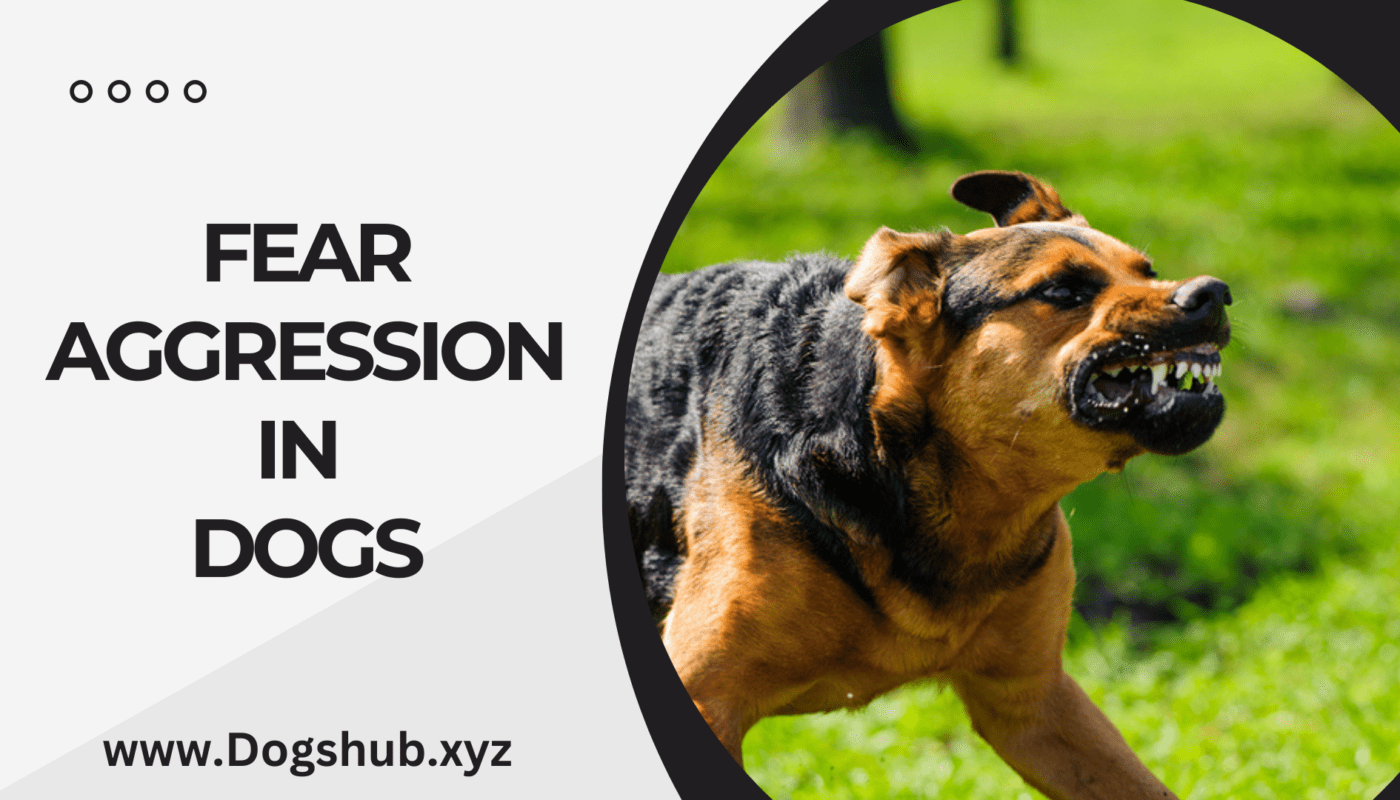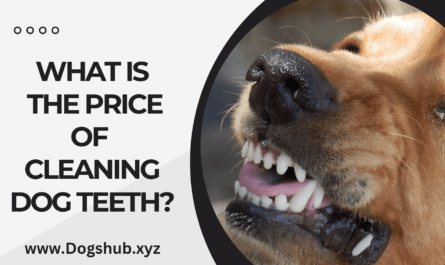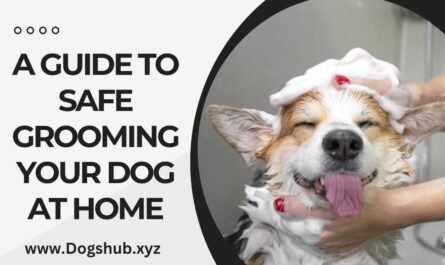Fear Aggression in Dogs. If a dog’s name is interprete by its name as “aggressive,” people typically assume that it means it’s a dangerous dog. However, this isn’t being the case. The dog isn’t bad, but he’s one who hasn’t been taken seriously, a dog who wants to be left alone and suffered a trauma which has changed the way he reacts to actual or perceive dangers.
There are a variety of causes for a dog to develop aggressive behaviors like barking, growling or lunging and snapping or biting, one of them is fear. Fear is an emotional reaction to a trigger. The trigger could include a person, a animal, a piece of furniture, or an event that causes an emotional reaction which could be real or a perceived threat.
What Is Fear Aggression in Dogs?
A dog’s fear aggression occurs when the dog seeks to improve. The distance between him and the trigger (commonly an animal or human). The dog is saying that he does not need to be involve, and the other person should remain at their distance.
Essentially, dog breeds that fear are prone to creating separation. When they are ignored and no distance is achieve, they may feel trapped and may escalate their behaviour. Dogs who are aggressive and fearful as their primary motivation could display offensive or defensive behavior in response to previous bad situations, levels of socialization and the genetic disposition.
Signs of Fear Aggression in Dogs
Body language for dogs that is related to fear is:
The ears are turned to the side or secure at the rear side of head
Lip-licking
Panting
Pacing
Body shakes
Eye contact with direct eye or Whale eyes (you are able to see that the eyes are white)
Hairs that bristle (piloerection)
Behavior to avoid
Vocalizations like barking, whining or grunting
If his first fears are not address The dog could exhibit an even more intense. Difficult to ignore behavior including jumping to lunge, squeezing, or even biting. When repeatedly expose to dangers or conditions in which the pet fears being overwhelmed it is possible for his behaviour to become aggressive without any warning.
If a dog is in a defensive mode generally, they won’t be hostile unless he is directly the touch. If a dog is afflicte with previous negative experiences in which it was unable to escape from the danger or threat. He might display an aggressive fear of the trigger, moving towards the trigger, and showing aggression and threats.
Causes of Fear Aggression in Dogs
There are numerous reasons can cause dogs to develop fear aggression. Dogs may have experienced poor socialization in the early years of his life and may also be exposed to traumatizing experiences. Or may be subjected to the punishment of a certain kind (such such as being a leash pulled while wearing a prong or choke collar) as well as the genetic disposition that can make him more likely to react fearfully in specific circumstances.
The most common stimuli that trigger an aggressive fear reaction for dogs are:
Strangers aiming their heads
A dog or person with a direct eye contact
Trimming their nails
Hearing their ears prickled
Hearing their ears cleaned
Being bathed
Shaving
Petting or being approached as they lay down
Being hugged
Getting a needle injection
Restricting an uninvolved person
Being snatch from their fur
When you touch the area of sensitivity for example, their paws or tail or their belly
Keep in mind that fear could be triggered by the perception of a threat. It is also subjective. A dog might not be scare of specific things or circumstances. Whereas an animal may exhibit different reactions upon exposure to the exact item.
If a dog is traumatized or has been through an unpleasant or stressful event for example. Being struck by a newspaper that has been rolled up and then a dog can quickly become hostile when confronted with aggressive behavior. The dog could also revert to aggression at the sight of the newspaper, or whatever objects his owner holds.
How To Deal With Fear Aggression in Dogs
1. Redirect the Dog
The desirable option a pet owner should do if their pet becomes aggressive is to get the dog from the area or take away the trigger your dog viewed as threatening.
If you’re responsible for the reason that the dog has been directing the aggression, get away.
If your dog is responding to another stimulus, redirect and distract the dog’s attention, and instruct the dog to engage in alternative behavior.
Other behaviors that are performe are able to benefit soothe your dog particularly. If the dog associates these behavior cues with an emotional reaction. Inviting your dog to do “look,” “touch,” “find it,” or any other behavior that your dog is fond of–and offering rewards and treats for the actions can benefit the dog recover from exposure to a dangerous trigger.
In the case of example, if your dog has a habit of barking at dogs. Whenever you spot the dog that is approaching, request your dog to rub your hands for a reward. After that, follow it by giving an “find it” cue to look for treats until the second dog is away.
2. Never Use Punishment
There is no way to correct the fear of aggression or aversion to violence with punitive tactics. Including disciplining your dog or applying physical correction with a choke or squeeze, or shock collar. Punitive methods could cause the dog to behave differently when you are around and instruct him not to display warning signs, where the dog will bite with no warning.
Punitive tactics are a way to boost anxiety and fear. Tools and techniques that are punitive are also associate with an increase chance of provoking behaviors directed towards you as well as others in your family.
The kinder, gentler way to work with your dog is with positive-reinforcement training methods. The dogs who have been trained together positive reinforcement are discovered to be more optimistic and durable. The use of positive-reinforcement training can help build the dog’s confidence and strengthen the human-animal bond.
3. Try Pheromones
Sprays containing pheromones may reduce anxiety to a certain degree in dogs with certain breeds However. They will not eliminate aggression. Behavior medications also benefit reduce anxiety. If the dog is unable to be a victim of the trigger, or feels scared or as if he is unable to leave, aggression could continue to occur.
In order to make a difference, the behavior medication should be utilized together with a behaviour modification program. Consult your veterinarian about your perfect method of treatment for your pet.
4. Seek Help From a Vocational
Pet owners should take advantage of competent advice, like by a veterinarian behaviorist or certified animal behaviorist or certified trainer as soon as their pet exhibits any symptoms of aggressive or fearful behaviors.
They will advise on how to control the dog’s behaviour in relation to the trigger. They’ll also advise the use of training or behavior modification to benefit lessen the dog’s anxiety and rise the dog’s confidence and tolerance. The vet behaviorist can make an appropriate diagnosis, offer an estimate of the future, and also discuss the possibility of with behavioral medicines as the best choice for your dog.
How To Prevent Fear Aggression in Dogs
To stop fearful or aggressive behaviors from occurring from the beginning Pet parents must:
Get your puppy socialized by taking him to publicization classes between the ages of eight and sixteen weeks of age.
Be sure to supervise your dog’s interactions with other dogs, people or children as well as pets and warrant that your dog doesn’t seem scared or overwhelmed.
Bring high-quality treats in order in order to benefit your dog develop positive associations with the stimuli that which he is initially uncomfortable.
Don’t use punitive tactics Avoid threatening or taunting actions that cause an aggressive react (like tugging on the tail of a dog).
Be kind, gentle to your dog, be patient, and constant when you pet and encourage those behaviors that you wish to see your pet demonstrate by giving praise verbally as well as reward.




